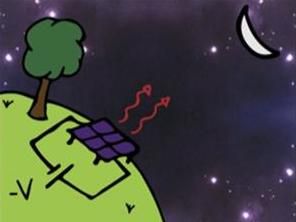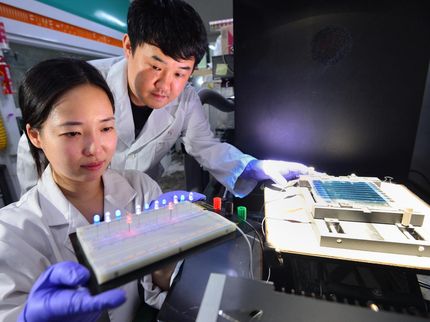Building the electron superhighway
Scientists have invented what they are calling 'an electron superhighway' in an organic semiconductor.
Advertisement
TV screens that roll up. Roofing tiles that double as solar panels. Sun-powered cell phone chargers woven into the fabric of backpacks. A new generation of organic semiconductors may allow these kinds of flexible electronics to be manufactured at low cost, says University of Vermont physicist and materials scientist Madalina Furis.
To help, Furis and a team of UVM materials scientists have invented a new way to create what they are calling "an electron superhighway" in one of these materials - a low-cost blue dye called phthalocyanine - that promises to allow electrons to flow faster and farther in organic semiconductors. Their discovery will aid in the hunt for alternatives to traditional silicon-based electronics.
Hills and potholes
Many of these types of flexible electronic devices will rely on thin films of organic materials that catch sunlight and convert the light into electric current using excited states in the material called "excitons." Roughly speaking, an exciton is a displaced electron bound together with the hole it left behind. Increasing the distance these excitons can diffuse is essential to improving the efficiency of organic semiconductors.
Using a new imaging technique, the UVM team was able to observe nanoscale defects and boundaries in the crystal grains in the thin films of phthalocyanine. "We have discovered that we have hills that electrons have to go over and potholes that they need to avoid," Furis explains.
To find these defects, the UVM team built a scanning laser microscope, "as big as a table" Furis says. The instrument combines a specialized form of linearly polarized light and photoluminescence to optically probe the molecular structure of the phthalocyanine crystals.
The new technique allows the scientists a deeper understanding of how the arrangement of molecules and the boundaries in the crystals influence the movement of excitons. It's these boundaries that form a "barrier for exciton diffusion," the team writes.
And then, with this enhanced view, "this energy barrier can be entirely eliminated," the team writes. The trick: very carefully controlling how the thin films are deposited. Using a novel "pen-writing" technique with a hollow capillary, the team worked in the lab of UVM physics and materials science professor Randy Headrick to successfully form films with jumbo-sized crystal grains and "small angle boundaries."
Better solar cells
Though the study focused on just one organic material, phthalocyanine, the new research provides a powerful way to explore many other types of organic materials, too. A recent U.S. Department of Energy report identified one of the fundamental bottlenecks to improved solar power technologies as "determining the mechanisms by which the absorbed energy (exciton) migrates through the system prior to splitting into charges that are converted to electricity."
The new UVM study opens a window to view how increasing "long-range order" in the organic semiconductor films is a key mechanism that allows excitons to migrate farther. "The molecules are stacked like dishes in a dish rack," Furis explains, "these stacked molecules - this dish rack - is the electron superhighway."
Though excitons are neutrally charged - and can't be pushed by voltage like the electrons flowing in a light bulb - they can, in a sense, bounce from one of these tightly stacked molecules to the next. This allows organic thin films to carry energy along this molecular highway with relative ease, though no net electrical charge is transported.
"One of today's big challenges is how to make better photovoltaics and solar technologies," says Furis, who directs UVM's program in materials science, "and to do that we need a deeper understanding of exciton diffusion. That's what this research is about."

































































